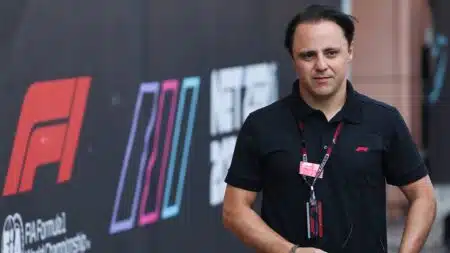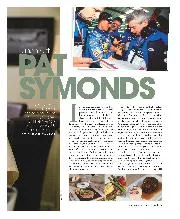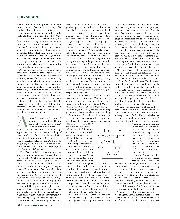It follows an interview with former F1 supremo Bernie Ecclestone earlier this year, where he told F1-Insider that he and Max Mosley, former president of racing’s governing body the FIA, had known about the deliberate crash soon after the race but hadn’t taken action.
It reignited the controversy and is the basis for Massa’s High Court battle with the FIA, F1 promoter Formula One Management (FOM) and Ecclestone.
Massa lost the 2008 title by a single point and says that he would have been champion if it wasn’t for the points lost in Singapore. He alleges that there was a cover-up by top officials who failed to investigate the scandal, despite being made aware of it.
This amounts to conspiracy and breach of contact, according to legal papers his lawyers filed in the High Court. Massa is claiming £64m plus interest in compensation, as well as demanding that he is recognised as the rightful 2008 F1 champion.
The court case is due to open this week in London. Here’s how it all began, with a desperate Renault team searching for victory in Singapore.
Crashgate: how it happened at the 2008 Singapore Grand Prix
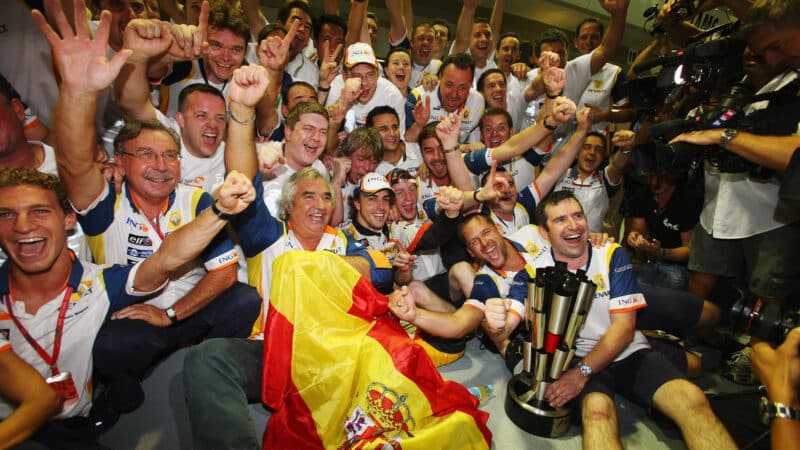
Alonso celebrates victory in Singapore with Briatore, who would later be banned from racing for his role in Crashgate
Getty Images
A winning tactic emerges
Fernando Alonso and Renault had been world champions in 2005 and 2006 but two years later — after Alonso’s tumultuous year at McLaren — the team was slumped in the midfield, with the suggestion that Renault was ready to pull the plug if results didn’t improve.
Team boss Flavio Briatore was under pressure and, with four races to go, Alonso hadn’t managed a podium finish in 2008. Team-mate Nelson Piquet Jr was struggling to make an impact — save for the German Grand Prix, where he shot to the front after fortuitously making a pitstop (for tyres and fuel, which was permitted in 2008) just before a safety car period.
In 2007 and 2008, the pitlane was closed during safety car periods, which meant that any driver lucky enough to pit just before a big incident could gain a huge advantage — as shown by Piquet at the Nürburgring. Fuelled and on fresh tyres, he closed up to the rest of the field — who were yet to stop — as they queued behind the safety car,
It was the luck of the draw that all teams were hoping to get: when the safety car pulled into the pits — followed by most of the grid — Piquet was catapulted from 14th to third. He led at one point, and finished second.
Renault hits form in Singapore
It wasn’t the win that the team was desperate for, however. By round 15 of 18 in Singapore, time was running out, but hope was rising. Alonso was fastest in two of the three practice sessions and looked competitive in qualifying: ending up sixth in the first Q1 stage.
Then a fuel hose problem in Q2 relegated him to 15th on the grid, one place ahead of Piquet. Neither seemed to stand much of a chance on Singapore’s tight and narrow streets. Or so we thought.
Piquet crash hands Alonso his winning opportunity
As the race got underway, Alonso made a quick pitstop on lap 12 for fuel and tyres. Given his midfield grid position, the early stop made little sense at the time and the Renault driver dropped to the back.
But a lap later, Alonso’s prospects took a dramatic upward turn as his team-mate was told to push and then crashed into the wall at Turn 17, bringing out the safety car and closing the pitlane.
Given the corner’s low speed, crashing there at all was considered unlikely, let alone twice in one afternoon: the Brazilian had spun at the same spot during the warm up lap just 20 minutes earlier, in what now appears to be a rehearsal. Combined with Alonso’s bizarre strategy, suspicions were already forming.
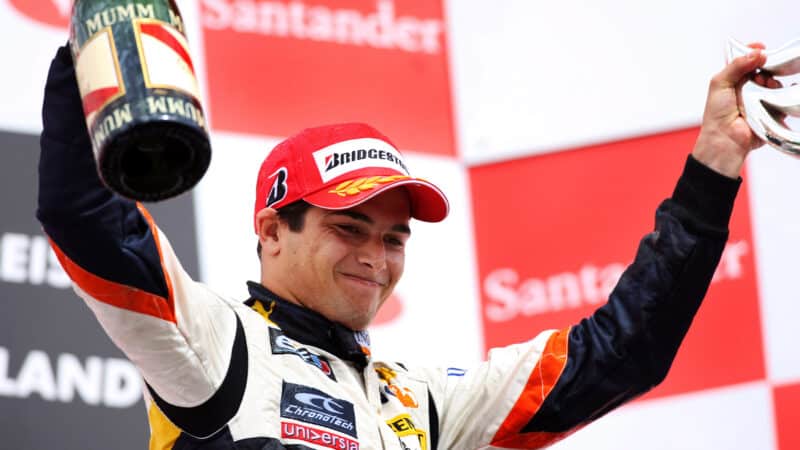
Piquet celebrates his podium place in Germany, ’08
Darren Heath/Getty Images
Just as Piquet had benefitted in Germany, so Alonso reaped the benefits at Marina Bay. Most of the grid pitted and he was suddenly fifth. When the dust finally settled, he was leading.
But some lost much more than a position to Alonso: Nico Rosberg and Robert Kubica were given stop-go penalties, their low fuel levels forcing them to stop while the pitlane was closed.
It was worse for race leader Felipe Massa. Ferrari called both of its cars in as soon as the safety car period was over and in the scramble to send Massa out before team-mate Kimi Räikkönen arrived, he was given the green light too early. His fuel hose hadn’t been removed and he ripped it out of the pump, trailing it down the pitlane. His crew raced across to remove it, but the title contender resumed in last.
Massa would eventually finish point-less in 13th while Alonso maintained his lead until the chequered flag, capturing his 20th career victory, followed by Rosberg in second and Hamilton in third.
Piquet Jr called his strange crash a simple error.
What was Crashgate?
Some raised the prospect of foul play at the time, but only few inside Renault knew that the crash had been no accident, along with Piquet Jr’s father, who was informed the following week. “When Nelson [Jr] called me, I asked him what happened when he shunted the car,” Piquet Sr. told Motor Sport in 2013.
“He said it was all programmed and he had been told to do it. I was quite shocked: ‘How could you do something like that?’ I asked him. He said, ‘Look, you should know what the pressure is like here. They told me that if I wanted to be part of the team, I had to do what they want’.”
Piquet said that he retold the story to F1’s then-race director, Charlie Whiting, in a private capacity, and that Whiting had said that he would need to make a formal complaint to take the matter further. But with Piquet Jr still at Renault, nothing more was said.
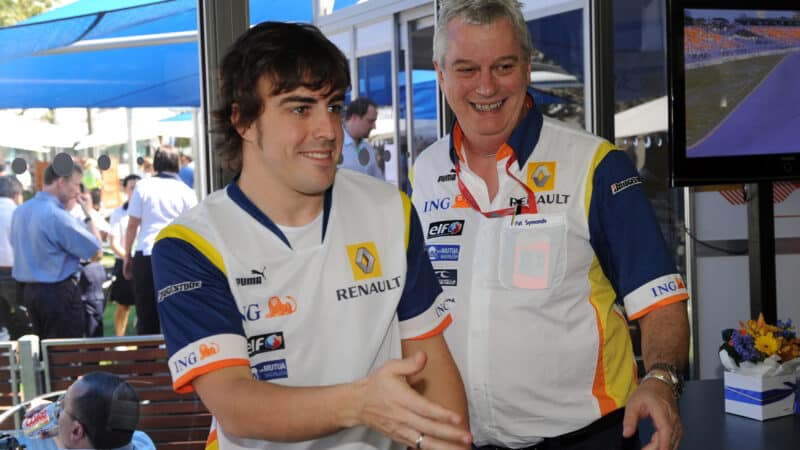
Pat Symonds with Fernando Alonso in 2008
DPPI
That was until Renault fired Piquet Jr in the middle of the following 2009 season, citing a performance clause. He promptly spilled the beans, telling the FIA that he had been ordered to crash by team boss Flavio Briatore and engineering director Pat Symonds to ensure Alonso would have a greater chance at victory.
“When Briatore confirmed to me that it was going to be the end for Nelson, I went to see Max [Mosley],” said Piquet Sr. “I told Nelson he would never drive in F1 again, and either he could go easy, or we could get some money from Renault. And he said, ‘OK, let’s go and fight’.”

